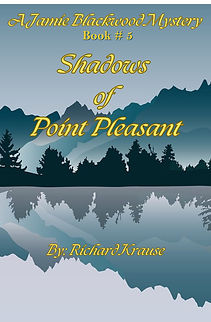Minerals are crystals, Oh My..................
- Richard Krause
- Sep 15, 2018
- 3 min read
Good morning, here we are it is Saturday again, whew what happened to the week? For some reason my lovely cup of Joe seems to be more flavorful this morning, maybe it has something to do with minerals in the water. Or maybe not, who knows. Maybe it is just time to wash the cup! Either way, man does it taste good this morning.
The old body has just about recovered from the "Battle of the Taurus" last week. Hands and arms do not look quite as much like I tried to give a wild cat a bath!, and the old back has finally decide to straighten up and behave. Things are looking up, but there is no doubt in my mind that I am too old to be playing mechanic any more. Hopefully the book sales will pick up before I have to work on "Matilda" the Jeep. So that is enough "Old Person" speak for today let's move on to the subject at hand.
Today we are going to continue our discussion on Gemstones and jewelry. So without any further a due let’s proceed.
The earliest forms of jewelry were items that early humans found naturally, such as shells or bits of bones. Early gravesites have also revealed that pre-historic man buried his dead with flowers and with carved ivory beads. These primitive beads would have taken at least an hour each to make.
Early man also might have found bits of turquoise that occurred naturally in areas of Turkey and North America. The pearlescent swirls found inside an abalone or conch would have also been used as jewelry.
They might have also found the earliest types of precious gems in the form of natural crystals, such as quartz or diamonds. Crystals are solid substances where the molecules are arranged in a symmetrical fashion, and they generally fall into one of six shapes:
Isometric, or cubic crystals are shaped like blocks and are symmetrically shaped. An example of an isometric crystal would be pyrite. This is also called fool’s gold because it has a metallic yellow or brassy color similar to gold.
Tetragonal, where the crystals are shaped like four-sided prisms and pyramids. An example of a tetragonal crystal is the zircon.
Hexagonal crystals are shaped like six-sided prisms, or pyramids. An example of this kind of crystal is the beryl, which includes gems like emeralds and aquamarines.
Orthorhombic crystals. An example of an orthorhombic crystal is topaz. Topaz can come in a variety of colors, although the mostly highly prized is a deep amber color. At one time, topaz was much more valuable, until rich veins of it were found in Brazil, which devalued the market.
Monoclinic crystals are short and stubby, with tilted faces at each end. Monoclinic crystals include gypsum.
Triclinic crystals are usually flat with sharp edges but no right angles. Each crystal has three unequal axes. An example of triclinic crystal is feldspar.
Why are most minerals not popular as gems?
There are millions of minerals that exist on the earth, but few of them are prized as gems and used for adornment. Many of them aren’t in colors that are usually highly prized for jewelry. Or they’re not able to be cut and polished to be made wearable as jewelry.
Often it’s a matter of changing taste and times. In Imperial Russia and in the Victorian era, the mineral malachite and other opaque minerals were highly valued as gemstones jewelry. It is often a by-product of copper mining, and is distinguished by a brilliant green color, with dark concentric circles of color swirling through it. It’s not as highly valued because it’s easily available and not as expensive as an emerald or ruby. But there is an entire room devoted to malachite in the Russian museum, the Hermitage, as testament to its desirability among the most privileged class of people.
There have been discoveries that indicate that malachite was mined in Egypt as early as 4,000 B.C. It’s a soft gem, and easily carved and shaped. It polishes to a beautiful, rich sheen. But still is not highly prized in the U.S. as a gemstone.
Very often some minerals simply shouldn’t be used as gemstones, but because of their beauty, people wear them as such anyway. A moonstone is one such gem. It’s relatively soft, with a rating of 6 on Moh’s scale of mineral hardness, compared to a diamond’s hardness rating of 10. It’s a type of mineral called orthoclase, but when it exhibits a translucent, milky quality, it’s then called moonstone.
Other minerals exist, but are simply not prized for gemstones. Among the more common minerals, quartz stands out as one that can be used for jewelry, as well as decorative items.
Well I guess that is enough for today. We will pick up with some more tomorrow.
I hope you all have a wonderful day, and may the Great Architect of the Universe keep and watch over you as you travel your path today.






















Comments